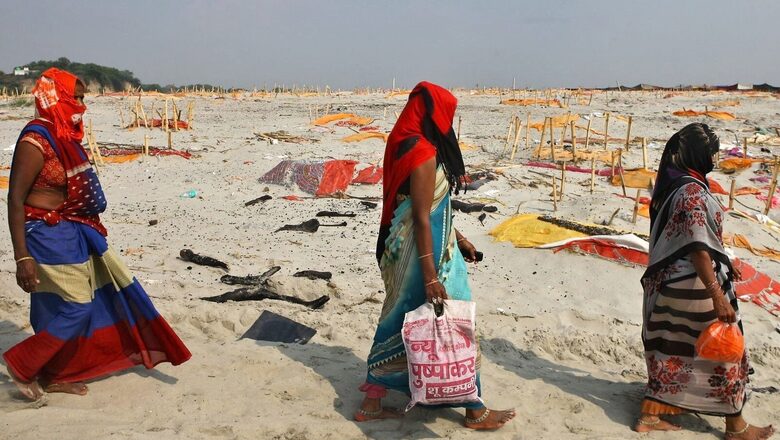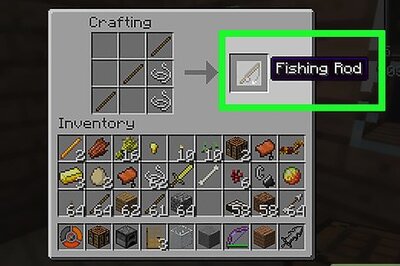
views
The devastating second wave of Covid-19 may still be fresh in the mind of Indians, but another wave comes knocking. According to experts, the third of wave of the pandemic is expected next month, said to be more harmful for children. However, as the Centre and state governments rush to augment paediatric capacities and vaccination, one might wonder what the third wave may be like for India.
In April and May, during the second wave, India saw a peak of 4 lakh cases, amid record deaths. People also struggled due to the lack of medical oxygen and healthcare facilities, an issue heavily raised by the Opposition during the recently held monsoon Parliament session. Meanwhile, an expert panel, set up by an institute under the Ministry of Home Affairs (MHA), has predicted the third wave may hit the country anytime between September and October and suggested significantly ramping up vaccination pace.
The committee of experts, constituted by the National Institute of Disaster Management (NIDM), also said that children will have a similar risk as adults since paediatric facilities, doctors and equipment like ventilators, ambulances, etc. are nowhere close to what may be required in case a large number of children become infected. The report, which has been submitted to the Prime Minister’s Office (PMO), observed that only around 7.6 percent (10.4 cr) people are fully vaccinated in India and if the current vaccination rate is not increased, India can witness six lakh cases per day in the next wave.
• Third Wave Will See Less Cases than Second Wave: Experts
According to some experts, the record spike of cases witnessed during the second wave may not happen in the second wave. A study by a group of researchers led by Mathukumalli Vidyasagar and Manindra Agrawal at the Indian Institute of Technology (IIT) in Hyderabad and Kanpur have predicted that India is likely to witness another rise in Covid-19 cases in August with the third wave peaking with less than 100,000 infections a day, in the best-case scenario or nearly 150,000, in the worst scenario. They said the upcoming third of Covid is less likely to be as brutal as the second wave where cases rose to 4 lakhs on a daily basis before slumping down again. Talking to Bloomberg, the researchers whose prediction is based on a mathematical model said that states reporting a high number of Covid cases like Kerala and Maharashtra may play a significant role in skewing the case count during the third wave.
‣‣ ‘Less People to Get Infected’: According to experts who spoke to The News Minute, the third wave may not be as devastating as the second one simply because there aren’t as many people left to be infected in India. “Roughly around 30% of India was infected in the first wave, which took a long time – starting January of last year to about February of this year. And then, a very fast second wave infected a further 30%. So, around a good number of people in India now have had some prior infection. Now, we have vaccinations, too, happening,” said Gautam Menon, professor of physics and biology at Ashoka University, Sonepat.
Menon said that because of an increased number of people who have already been infected, they will be protected against severe consequences of the disease, adding that are a little less likely to transmit the disease to other people. “Therefore, you may potentially see an increase in cases but it will come from people who have not been vaccinated yet. It is critical to keep that number small by vaccinating faster and at a larger scale,” he added.
• Virus May Mutate, But Immunity Matters
According to epidemiologist Dr Jayaprakash Muliyil, if there is a new mutant, it may be able to produce a wave. But in places like Chennai, where nearly 80% of the population have immunity, Muliyil says there can’t be a big wave. “As the virus replicates, it would not be able to jump further from an immune person. To create an exponential rise, there should be susceptible people. That’s why Kerala is still having a problem because the number of susceptible people is very high,” he told The News Minute.
While most Indian states are not reporting high cases, Kerala and Manipur are exceptions. But in Kerala, this may not necessarily be a sign of poor pandemic management, said the report by TNM. Multiple variables, such as increased testing and reporting, could be contributing to the high numbers. It was observed that Kerala had a 44% seroprevalence rate compared to Karnataka’s 69.8% in July of this year. Because of this, there is a larger risk of infection in Kerala, where the pandemic’s curve is less pronounced than in other areas.
So, while some states may be nearing a threshold immunity currently, experts have pointed out that more people experiencing severe diseases and higher mortality is not a safe or sustainable way to obtain this immunity. According to Dr. Muliyil, this virus is more contagious than chickenpox and “it’s going to be very difficult to stop it.” The vast majority of countries have been unable to achieve success, he said, adding that there’s no need to feel guilty about it, but that vaccinating the elderly and vulnerable was most necessary.
• Children to Be Affected More?
Experts have warned that children may be affected more in the third wave of the coronavirus, owing to them being a ‘vulnerable population’ as vaccinations for kids has not started yet in India. However, the Health Ministry has reiterated that there isn’t enough data to support this claim, but that the government has been working to increase paedritic facilities in India in preparation for such a possibility.
‣‣ Vaccination for Children Soon: Zydus Cadila’s Covid vaccine, which can also be administered to children above the age of 12 years, was recently given emergency approval by the DGCI, paving way for inoculations to be started soon for kids above twelve.
ALSO READ | Children Above 12 With Comorbidities Will Be Vaccinated First, Govt Panel Chief Says
‣‣ Bengaluru Sees Rise in Kids’ Cases: In Karnataka’s capital Bengaluru, reports claimed a large instance of children have been infected in the starting days of August. The state government has hence taken many measures – from setting up wards for children, to identifying kids with compromised immunity – to tackle the rise. State government experts also said there wasn’t a numerical rise in cases specifically for children, but that required measures were being taken for any such possibility.
‣‣ Symptoms in Children, What the Expert Committee Recommends: Children with COVID-19 infection have largely been seen to be asymptomatic or develop mild symptoms. But this becomes worrisome in case children have any comorbidity or other special needs. According to the Ministry of Health and Family Welfare, out of all the children hospitalised due to COVID, 60-70 percent had comorbidities or low immunity.
Children have also been seen to develop MIS-C (Multi-system Inflammatory Syndrome) which is a rare but extremely serious condition developed post-COVID recovery, it said. According to a parliamentary standing committee report in 2015, there is an 82 percent shortage of paediatricians in India’s primary health centres and up to 62.8 percent of positions for paediatricians in community health centres were vacant.
The working group committee experts from NIDM suggested a holistic home care model, immediate increase in paediatric medical capacities and prioritising mental health issues among children.
• Covid-appropriate Behavior Important
While the second wave necessitated lockdowns in many states of India, these were relaxed after cases significantly came down. But soon, people were seen violating Covid-19 protocol, by travelling to tourist locations in large numbers, becoming fast and loose with masks, and social distancing.
‣‣ Tourists: The Health Ministry warned warned repeatedly against such behaviour, adding that the gains of the past may be undone due to such incidents. Thousands of tourists have been visiting hill stations to avoid the heatwave in the plains. The HP government had announced in June the easing of Covid-19 restrictions following which, tourists started to head to higher altitudes, especially to Shimla, Kullu-Manali, and Dharamshala.
‣‣ Markets: On August 13, the Delhi government had closed 46 shops for two days in the busy Sarojini Nagar Market in South Delhi for flouting Covid-19 guidelines. The shops were allegedly found to be violating the Covid-19 protocol issued by the government. Other markets have also endured temporary shutdowns due to violation of norms.
• Vaccinations in India
Crucial to protecting people against Covid-19, vaccinations have seen an uptick in the country over the last months. More than 57.05 crore COVID-19 vaccine doses have been provided to state and UTs so far, the Union Health ministry said on Monday. The ministry said the Union Government is committed to accelerating the pace and expanding the scope of COVID-19 vaccination throughout the country.
According to a recent study done by professors and alumni from Pandit Deendayal Energy University (PDEU) in collaboration with Nirma University, the vaccination rate of India is currently 3.2 percent and if does not improve, India can witness six lakh cases per day in the third wave. But if the government’s proposal to increase this rate by five times (1 crore doses per day) comes to fruition, India will see only 25 percent of the cases (seen in the second wave) during the third wave peak.
‣‣ Sex Ratio in Inoculations: According to data from the CoWin portal, out of the total 30.9 crore doses administered since January 2021 till 25 June 2021, 14.3 crore went to women vis-a-vis 16.7 crore to men. The proportion of vaccine coverage — 856 doses to women for every 1,000 doses for men — does not match India’s current sex ratio of 924 women per 1,000 men. The largest state in India, Uttar Pradesh, has 42 percent vaccination of women, West Bengal has 44 percent female coverage, Dadra and Nagar Haveli (predominantly rural UT) 30 percent. Only a few states- Kerala and Andhra Pradesh — have more vaccine coverage for women than men. Rural women are even more marginally placed vaccination-wise, the report said.
Read all the Latest News, Breaking News and Assembly Elections Live Updates here.




















Comments
0 comment